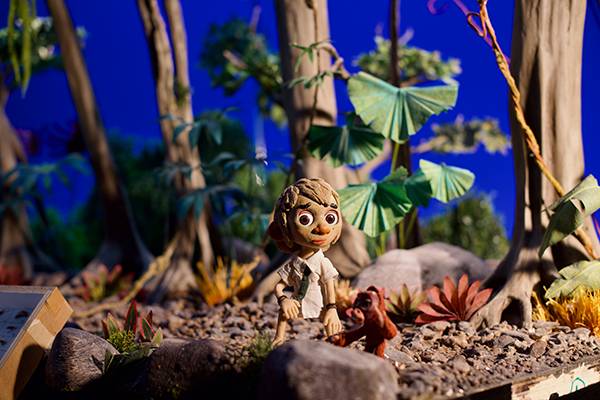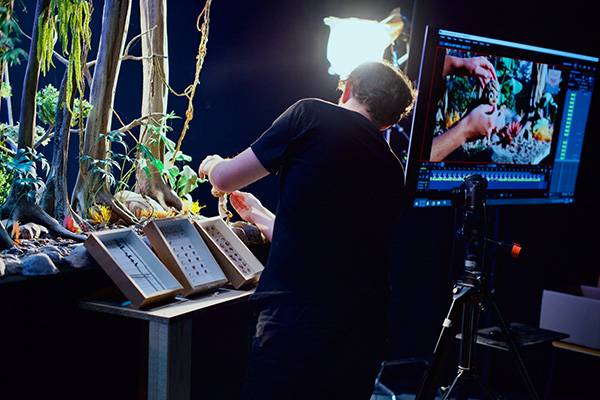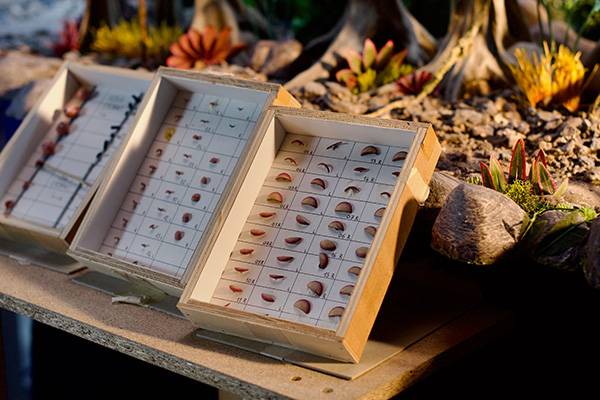Talking to...
Nicolas Burlet about the challenges of producing animated films
22.11.2023
When the small Valais town of Martigny is home to the tropical forest, it can only mean that Nadasdy Film and its 40-member international film crew is at work. They are all meticulously crafting the stop-motion animation film SAUVAGES! – the new film by director Claude Barras that follows his Oscar-nominated MY LIFE AS A ZUCCHINI. A homage to nature and the people of Borneo.
Shortly before the filming wrapped, SWISS FILMS visited the set and spoke with producer Nicolas Burlet.



What is SAUVAGES! about?
SAUVAGES! tells the story of Kéria, an 11-year-old girl who lives with her father in a settlement next to a palm oil plantation on the edge of a tropical rainforest on the island of Borneo. One day she discovers an orphaned orangutan baby and follows the little monkey into the forest. This is how Kéria begins to learn about the tropical jungle for herself. She gets to know the Penan, her indigenous people who live in the forest and are trying to protect it from destruction.
As a producer who has made numerous short films, what is the main difference for you when working on such an elaborate feature-length animation film?
Apart from the dimensions and the risk, which are very different, it’s essentially the same work, just with more of everything: more staff, more organisation, more money. Nineteen different sets were created for SAUVAGES!. The stop-motion animation is shot with an animator on 10 of the sets, while scenes are being meticulously prepared on the others. In this way, we manage to shoot an average of 40 seconds of film in one day.
What is it like to make animation films in Switzerland?
Switzerland is a country with a small, still rather nascent animation film industry. Generally speaking, financing films is difficult and animated films are expensive. Very few feature-length animation films are made here. What’s more, it’s not easy to find specialists and technicians. It’s much more difficult than in France or Germany, where there is a large film industry.
So coproductions are very important for you?
They are extremely important for animation films! SAUVAGES! is a coproduction between Switzerland, France and Belgium with a budget of 13 million Swiss Francs – that’s a lot of money for a Swiss animation film, but a rather modest budget by international standards. On the one hand, coproductions enable us to finance our projects; on the other hand, we can also learn a lot and benefit from expertise that is not readily available in Switzerland. For example, some SAUVAGES! crew members have already worked together with Tim Burton, Wes Anderson, Guillermo del Toro or at Aardman Studios.
What other projects is Nadasdy Film working on?
We are currently in production with a feature-length animation film by Marcel Barelli (MARY ANNING), which will be finished in summer 2024. We are also working on three 26-minute TV specials and several short films. Numerous projects are in development, including the first feature-length animation films by Isabelle Favez (ROUXELLE ET LES PIRATES), and Marjolaine Perreten. We are also currently financing the XR project SUNSET MOTEL by Gilles Jobin and Thomas Ott.
Is working on an XR project very different from working on a stop-motion animation?
The artistic process is similar, but the technical process is completely different. In the case of SUNSET MOTEL it’s 3D CGI. But otherwise, the work is the same: securing the financing, organising the shoot.
What will animation films look like in 10 years’ time with the new technologies that will be available?
Like in other fields, repetitive work will be automated, tasks such as colourisation. It will probably be more problematic for supporting staff. Yet the new tools, even the so-called intelligent ones, can only repeat what they already know. Human creativity, someone like Claude Barras, will never be replaced. And neither can vision or genius. Not much will change in this respect, it needs the people behind it!